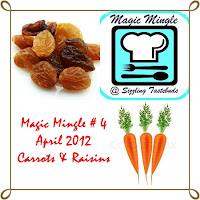With the onset of the summer season in India, the mango season also starts. First come the baby mangoes, which are pickled and preserved for the year. Next come the raw mangoes, some are fat and round, some are thin and long, some are really sour and some are nice to eat as is. My favourite among the different varieties of raw mangoes is definitely the Kili Mooku Maanga, Parrot Beak Mango, when literally translated. And as soon as these are spotted in the markets, they find their way into my kitchen. These mangoes are just awesome, and can be used to dish out a variety of recipes – anything from a Spicy pickle to a refreshing cooler. If none of these suit your tastebuds, then simply slice the mangoes into strips, sprinkle some salt and chilly powder and there you have a wonderful snack ready in a jiffy!
Finally it’s time for the sweet and juicy, golden, yellow, round mangoes. That’s the most number of adjectives I’ve used to describe any fruit. Mango – Truly the king of fruits isn’t it? India is the largest producer of mangoes with a huge variety – Appoos, Totapuri, Langda, Bangnapalli, Malgova, Rumani, Dusseri, Sindoori, Malliga, Himampasand etc etc
Our family, on the whole is a huge lover of mangoes. Children and adults alike gorge on this fruit throughout the season and truly wish that the season would last a little longer, but of course not the summer’s heat. During the summer vacations, my grandfather would buy, tokris, baskets full of mangoes and it would be served with curd rice. But I never liked the combination of mangoes with curd rice so used to eat later.
Today’s recipe is a very simple one, which I learnt from my MIL. She says, come summer, and this dal would be made on a very regular basis in most Telugu families. It tastes awesome with plain white rice and a dollop of ghee or you could also serve it as an accompaniment with rotis.
What you’ll need
- Tuar Dal – 1 cup
- Raw Mango – 3/4 cup, peeled, deseeded and cut into cubes
- Onion – 1 medium, finely chopped
- Green Chilly – 2, Slit
- Ginger – 1 inch piece, grated
- Turmeric Powder – ¼ tsp
- Salt to taste
For tempering
- Oil/Ghee – 2 tsp
- Mustard Seeds – ½ tsp
- Cumin Seeds – 1 tsp
- Asafoetida – a generous pinch
- Dried Red Chilly – 1 to 2, broken
- Curry Leaves – few
Method
- Wash and rinse the dal in 2 to 3 exchanges of water. Soak it for about 20 minutes. Discard water, rinse again.
- Add the rinsed dal into a vessel. To this add chopped onions, green chilly, ginger, and turmeric powder.
- Place the chopped mangoes in a small plate, separately and pressure cook the dal and mangoe pieces for 3 – 4 whistles.
- Once the pressure is released, add the cooked mangoes to the dal and mix well.
Add salt to taste and bring the dal to a boil and simmer for 5 minutes.
- Heat a small frying pan with oil/ghee, temper with mustard seeds, cumin, red chilly and asafoetida.
- Garnish with curry leaves.
Serve hot with plain rice or rotis.
Note:
Increase or decrease the amount of mangoes depending on its tartness and your liking.
You can also add a tsp of powdered jaggery.
Linking this to
Healthy Diet - Side Dishes hosted by
Vardhini and
Mango Mania 99





































